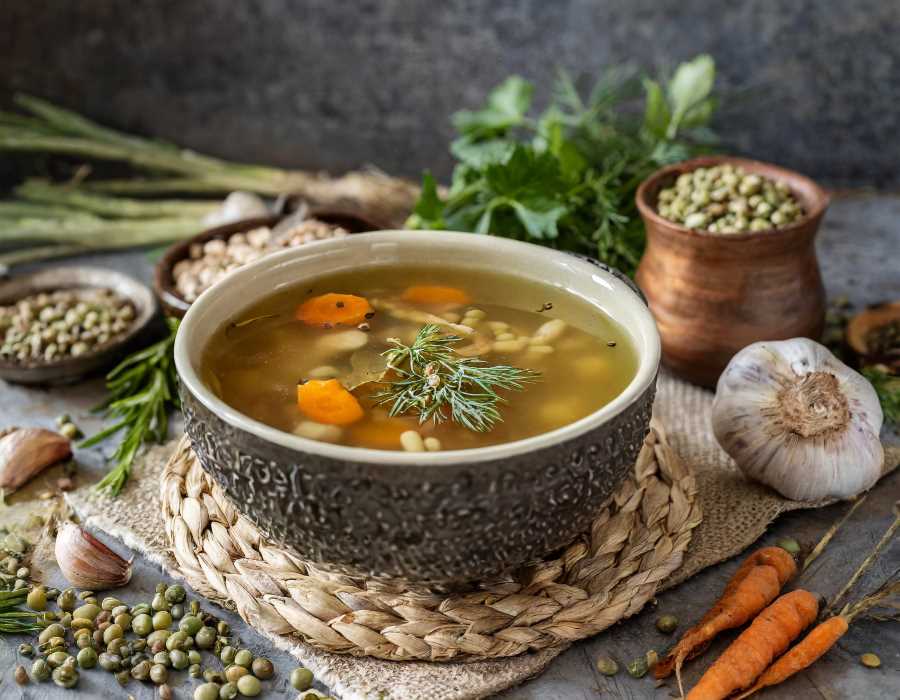A Peasant Broth That Nourished Empires
This article explores a simple broth with roots in peasant cooking. Dried legumes, root vegetables, and butter come together in a slow-cooked recipe. Though humble, this broth's magic lies in its ability to transform and enhance other dishes, particularly meat stews.

There's something almost magical about recipes that have been passed down through generations. Not magic as in a flash of pixie dust and culinary levitation, but a magic that simmers slowly, borne from unhurried ritual and the gentle layering of flavors. This peasant broth is one such recipe, rustling of simpler times and kitchens alive with the fragrance of earth and patience.
Now, this isn't your flashy, look-how-many-ingredients-I-can-cram-in sort of broth. It's the culinary equivalent of a warm, worn-in sweater – comforting, unpretentious, and deeply nourishing. The kind of broth your grandmother (or great-grandmother, or your own inner culinary sage) might have made if she lived in a storybook cottage.




